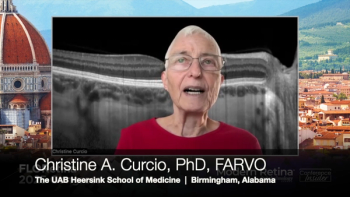
Clinical features of unilateral acute idiopathic maculopathy identified
According to a study in the Archives of Ophthalmology visual recovery of unilateral acute idiopathic maculopathy is linked with structural changes, suggesting that inflammation of the inner choroid, retinal pigment epithelium and partially reversible outer photoreceptor complex are involved in the cause of the disease.
According to a study in the Archives of Ophthalmology visual recovery of unilateral acute idiopathic maculopathy is linked with structural changes, suggesting that inflammation of the inner choroid, retinal pigment epithelium and partially reversible outer photoreceptor complex are involved in the cause of the disease.
A team led by Dr Cecilia S. Jung, Department of Vitreoretinal Surgery and Disease, Emory University, Atlanta, Georgia, USA, conducted a retrospective review on 4 unilateral acute idiopathic maculopathy patients. Clinical characteristics including age, symptoms, Snellen visual acuity and fundoscopic features were analysed. Images from spectral-domain optical coherence tomography (SD-OCT), fundus autofluorescence, fluorescein angiography and indocyanine green angiography were also evaluated.
Viral prodome, orchitis, hand-foot-mouth disease and positive coxsackievirus titers were among the associated findings present in the patients. Median visual acuity improved from 20/400 to 20/30 at follow-up, with a median follow-up time of 8 weeks.
The central macula developed irregular, circular white-grey areas of discolouration during the early stages of disease. SD-OCT presented with a partially reversible disruption of the outer photoreceptor layer.
Irregular early hyperfluorescence and late subretinal hyperfluorescence was identified with fluorescein angiography. Choroidal inflammation was found with indocyanine green angiography.
Newsletter
Get the essential updates shaping the future of pharma manufacturing and compliance—subscribe today to Pharmaceutical Technology and never miss a breakthrough.








































